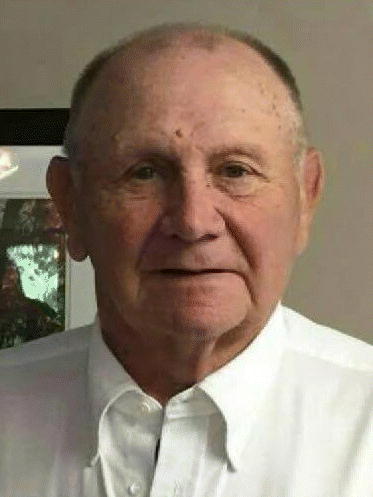Coming down safely – Aviation company now onto creating safety systems for vertical landings
Published 1:33 pm Tuesday, May 18, 2021





|
Getting your Trinity Audio player ready...
|
By BOBBIE CURD
bjcurd@gmail.com
Aviation Safety Resources (ASR) is one of 10 businesses to receive the Pacesetter award from the Kentucky Small Business Development Center.
“We’re not your everyday business …” said Larry Williams, president and CEO. “We’ve got a lot of stories.”
The award recognizes high-performing second stage and startup businesses producing innovative products. They are chosen due to increasing sales, creating jobs and serving the communities they are in.
ASR, founded in 2000 by Dario P. Manfredi and Savia Giarrafa, designs, develops, tests and produces airplane parachute systems — for the airplanes, not people.
“Our system is designed to work. If you have an inflight emergency, can deploy the parachute system and bring the whole plane and its occupants safely down so they can walk away,” Williams said.
Now, ASR has designed another system that works for aircraft that takes off and lands vertically; that includes fixed-wing aircraft, which he said to think of as “really large drones.”
“For a recovery system to work, you have to fill the parachute up and get it under a stable descent. Forward speed inflates the canopy,” Williams said.
He said there are over 400 designs of vertical aircraft being developed today. “A standard recovery system won’t work because you don’t have the forward speed, so you have to be able to inflate the canopy faster.”
Just last month, UPS announced it would be buying 10 electric vertical takeoff and landing aircraft from Beta Technologies, “with an option for 150 additional ones,” Williams said, which is a big deal to ASR.
“We want to convince the operators and the public, that if you’re going to be operating these vehicles, you have to have a safety system on board.”
He said where the Beta vehicle for UPS is concerned, it’s been published that the load capacity is 1,400 pounds. If that’s combined with the weight of the vehicle, at 1,000 feet in the air and something goes wrong — “that’s a lot of energy that’s coming down and will cause a lot of damage if you can’t manage it.”
Williams said to understand the situation, think of it this way: If you’re just 500 feet in the air and fall, an object falls at 32-feet per second during acceleration and will hit the ground at 122 miles per hour. “A vehicle that big hitting the ground at the speed — it would hit the ground at 200 miles an hour. There’s a public aspect to this, as far as safety goes.”
Simply put, Williams said there is a whole new mode of transportation that’s coming. “We have the unique opportunity to develop a safety solution for that technology, that will result in saving lives. That’s pretty cool, pretty important … That’s why I’m with this company.”
Williams graduated high school from Garrard County. “When I was growing up here, I was on the fire department over in Lancaster, dealt with a lot of car accidents, saw the invention of airbags in cars and saw the impact,” he said.
Eventually Williams went into the Air Force, with an aim to be a firefighter, “but I wore glasses, so I couldn’t.” He became a nuclear weapons tech, but returned what he loved when he was out of the service.
“The first half of my career was all around aircraft rescue and firefighting, I worked at Blue Grass Airport …” and even had his own company at one point, contracted for fire protection at airports around the country and in Bolivia.
“One of the reasons the technology and reducing energy is so important to me is because I’ve seen the fatalities — I’ve been there, I’ve seen it.”
He worked for AmSafe Inc., which makes restraint systems and developed an airbag for airplanes. “I had seen what airbags had done in auto accidents, and I was interested in it for aviation. I was fortunate enough to be involved in that.”
Williams has also been the CEO if another company that did parachute recovery systems. “I got out of it for a little bit. But with this new vertical takeoff and landing markets … it presented a new series of problems. … That’s what got me interested and back into it.”
He said ASR found a building in Nicholasville that “is quite well-suited to what we wanted to do, and there’s a good employment base here. And Kentucky is the No. 2 export industry in aeronautics, as far as how the state rates, only behind Washington State. The export figure it around $10 billion — we’re ahead of California, Arizona, Texas … The industry is quite large here.”
Not to mention, Williams said the company has great support locally. “The county judge, mayor and city officials have all been quite supportive. The state has been good, as well; Andy Barr has helped us a number of times from a congressional standpoint.”
Also in April, ASR Inc. acquired Strong Enterprises, another parachute system manufacturer, out of Orlando, Florida. “They cut and sew the parachutes and we assemble them here,” Williams said.
Ten winners were announced during the Kentucky Pacesetter celebration, held virtually due to the pandemic.
The Pacesetter awards, originally slated to be announced in 2020 but delayed due to COVID-19, recognize high-performing second-stage and startup businesses that are producing innovative products, increasing sales, creating jobs, and serving communities of the commonwealth.
“These businesses have proven they have the ability to advance, both as an organization and as a leader in the small-business community here in the commonwealth,” said Kristina Joyce, state director for the Kentucky SBDC. “Their contributions to the community and their commitment to their employees strengthen the economy of Kentucky and provide a great example for future businesses.”
Always thinking ahead, Aviation Safety Resources has even designed a system that works for aircraft that will one day take off and land vertically.








